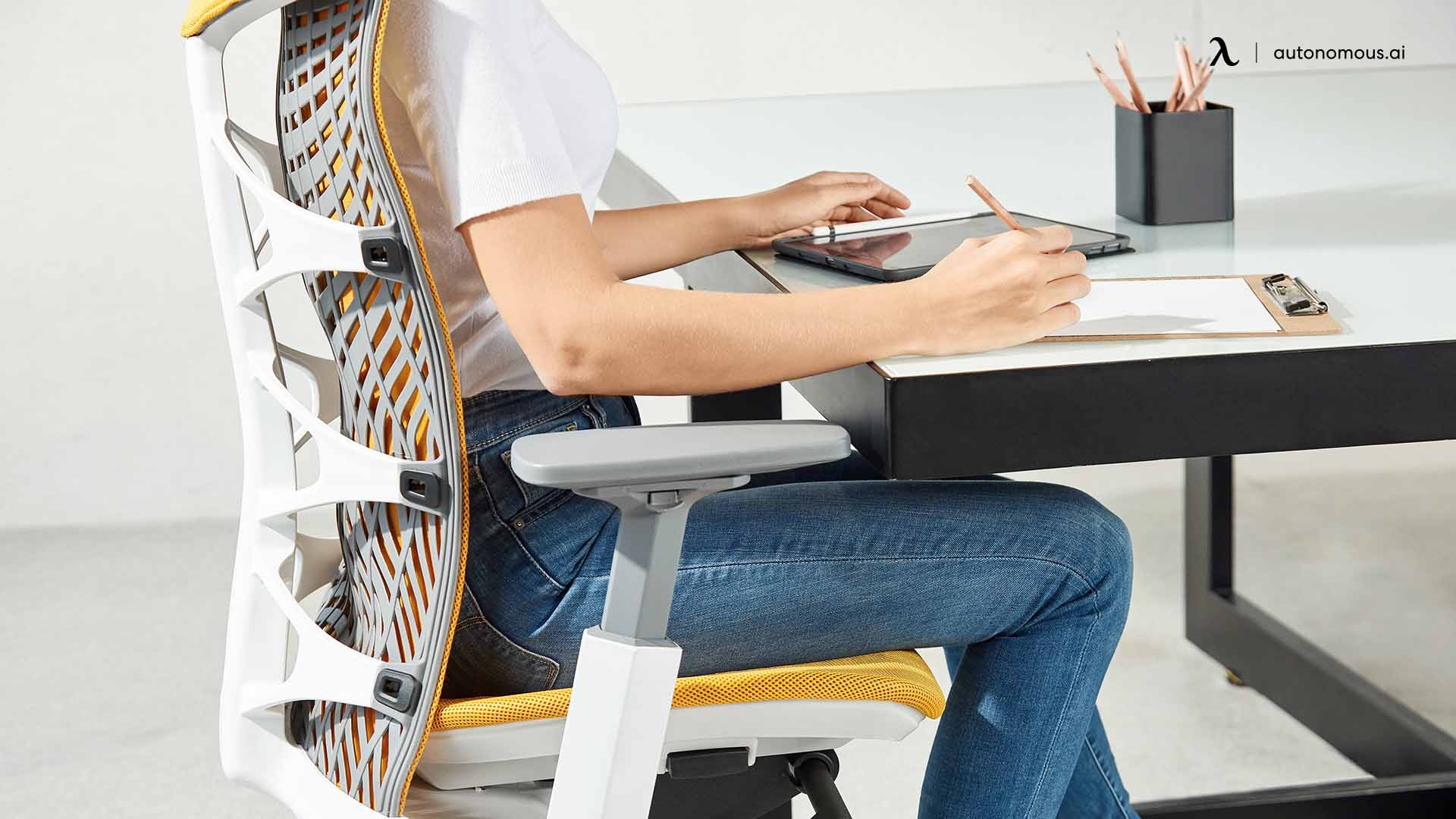Chair Types and Their Suitability for Upper Back Pain: Best Ergonomic Chair For Upper Back Pain

Choosing the right ergonomic chair can significantly impact your comfort and alleviate upper back pain. The chair’s material, design, and adjustability all play crucial roles in providing adequate support and preventing further discomfort. Understanding the nuances of different chair types is paramount to making an informed decision.
Best ergonomic chair for upper back pain – The type of chair you select significantly influences its effectiveness in managing upper back pain. Different materials offer varying levels of breathability, support, and durability, all impacting your overall comfort and posture. Consider the following comparison to understand which chair best suits your needs.
Comparison of Ergonomic Chair Types for Upper Back Pain Relief, Best ergonomic chair for upper back pain
The following points highlight the key differences between popular ergonomic chair types, focusing on their impact on upper back pain. Careful consideration of these factors is crucial for selecting a chair that optimizes posture and minimizes discomfort.
- Mesh Chairs: These chairs often feature breathable mesh backrests that promote airflow and prevent overheating. The flexible nature of mesh allows for some degree of conforming to the back, but they may lack the robust support of other materials, particularly for individuals with severe back issues. Mesh chairs are generally lighter and easier to adjust than leather or fabric chairs. However, the lack of substantial lumbar support can be a drawback for those needing targeted back pain relief.
- Leather Chairs: Leather chairs offer a luxurious feel and often provide a more substantial and supportive structure. However, leather can be less breathable than mesh, leading to discomfort in warmer climates or during extended use. The firmness of the leather can also be a factor; some find it too rigid, while others appreciate the support it offers. High-quality leather chairs, especially those with adjustable lumbar support, can be highly effective for upper back pain, but their higher cost and potential breathability issues are important considerations.
- Kneeling Chairs: These chairs encourage an upright posture by placing the user’s weight on their knees and shins, thereby reducing pressure on the lower back. While this can indirectly alleviate upper back pain by improving overall posture, kneeling chairs may not provide direct support for the upper back itself. They might not be suitable for individuals with knee problems or those who find the posture uncomfortable. Furthermore, extended use can cause discomfort in the knees and shins.
The Impact of Chair Materials on Back Support and Comfort
The material of your ergonomic chair directly impacts its ability to provide adequate support and comfort, especially for those experiencing upper back pain. Different materials offer unique properties that influence how the chair interacts with your body.
Mesh, for instance, allows for airflow and conforms to the body’s shape to a certain degree. This can be beneficial for individuals who tend to overheat or prefer a more flexible seating experience. However, mesh may not provide the same level of rigid support as leather or high-density foam. Leather, on the other hand, provides a more substantial feel and can offer excellent support, but its lack of breathability is a significant consideration. The right material choice depends on individual preferences and needs, including climate and personal sensitivity to temperature.
Advantages and Disadvantages of Chair Types in Relation to Upper Back Pain
Understanding the advantages and disadvantages of different chair types is crucial for making an informed decision. Each type offers a unique set of benefits and drawbacks that impact its suitability for individuals experiencing upper back pain. This understanding can lead to better choices that promote back health and comfort.
- Mesh Chairs: Advantages include breathability and adjustability. Disadvantages include potential lack of robust lumbar support for severe back pain.
- Leather Chairs: Advantages include luxurious feel and substantial support (in high-quality models). Disadvantages include lower breathability and higher cost.
- Kneeling Chairs: Advantages include improved posture and indirect relief from lower back pain. Disadvantages include potential discomfort in knees and shins, and lack of direct upper back support.
